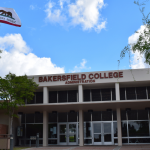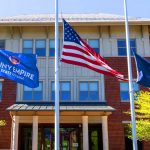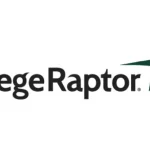Interview Conducted By: Damon Vangelis, Founder & CEO
Dr. James Catanzaro is a long-standing leader in higher education. He served as president of community colleges in four states for nearly four decades, including as President of Chattanooga State Community College for a quarter of a century. During those years and for a decade before, he taught college classes — in classroom, online and hybrid. Jim is currently Executive Director of the Higher Education Research and Development Institute – South (HERDI – South). In this interview with Ocelot, Dr. Catanzaro shares his views about the challenges and opportunities for community colleges in this most disruptive time.
Ocelot: We see all the uncertainty that has been caused by the pandemic. What are the biggest challenges you see for community colleges this Fall?
JC: I see four immediate, short-term challenges:
(1) Clearly number one: keeping students, faculty and staff physically and emotionally safe by not putting them at risk after they’ve been shielded for months from the worst effects of Covid-19’s jaw-dropping spread. All this is much more complicated for those who are returning to campus since the majority of students and staff who will arrive each day will have been exposed to family, perhaps part-time co-workers, friends, etc.; also, it will be more difficult for them because those coming to campus will be in tight hallways, classrooms, offices and restrooms, spaces that were designed with cost saving in mind and for bringing students and staff close together;
(2) Maintaining progress on student success initiatives along with previous efforts to close equity gaps, especially as colleges ramp up online instruction or go, in many cases, entirely to online and hybrid modalities;
(3) Adapting curricula to the fast-changing expectations of employers; and
(4) Making the hard decisions to prepare institutions both for a potential prolonged bout with the virus and for financial restructuring.
Ocelot: What challenges do you see for the Spring, and more broadly, in the years ahead?
JC: I believe there are four broad challenges:
(1) Creating and sustaining student engagement (not just with their faculty but also with the institution) through more intensive orientations; learner-centered instruction; enveloping, pro-active student communications and services; and competency-based programs;
(2) preparing the institution for the enrollment cliff that most will plunge over in 2025 because there will be many fewer college-age students available as a result of the decline in birth rates during the 2007-09 Great Recession;
(3) maintaining a strong contingent of full time faculty and staff in the face of financial uncertainties; and
(4) preparing all faculty, regular and adjunct, to use a full array of teaching competencies in order to be as effective remotely and in hybrid modalities as they are in person — proficient in asynchronous as well as synchronous instruction, and, above all, in the use of technology — the full suite of LMS features, Google certification, authentication technologies, etc.
Ocelot: What can community colleges do in the coming year to be of even greater value to students?
JC: I see three action-items:
(1) Listen to students through regular focus groups and formal and informal lines of communication, and act on their suggestions;
(2) reach out to meet their personal needs — nutrition, housing, child care, transportation, technology access, personal counseling; and
(3) reduce faculty loads at least from 15 to 12 credits because teaching under duress will require more faculty engagement with students individually and collectively and more course content boosters — videos, visualizations, real-time student progress analyses, scaffolding, tracking and messaging.
Ocelot: Where are the areas of opportunity for community colleges in the next year?
JC: I see four major areas of opportunity:
(1) become more collaborative with area company training and recruitment personnel, also with other institutions by sharing faculty, technology, labs, and costs;
(2) attract students who previously were university-bound because the university’s appeal may well have been ruptured by Covid-19;
(3) create micro, intensive spring and summer prep programs for students who are coming in underprepared for college; and
(4) build entrepreneurial studies programs to prepare students for what many graduates will need to do — instead of being company employees, they will have to start their own business.
What changes do you anticipate in higher education as a result of the pandemic?
JC: Four major changes are likely:
(1) Weaker colleges will decline further in enrollment and some will fold altogether;
(2) there will be much greater reliance on technology — in communications with and among students, and in classes as faculty are obligated to engage and mentor students as well as directly facilitate learning;
(3) hopefully, there will be far more use of teaching assistants; and
(4) there will be major changes in what is sought in public community college leadership — a shift from more bureaucratic leadership to more clearly entrepreneurial leadership — people with proven data-driven business focus and a strategic mindset.
To learn more about Ocelot go to ocelotbot.com.















